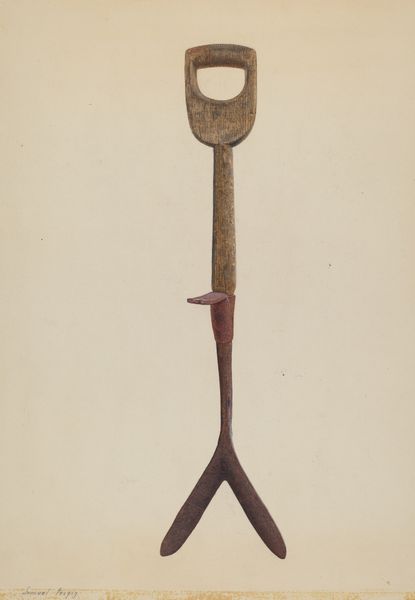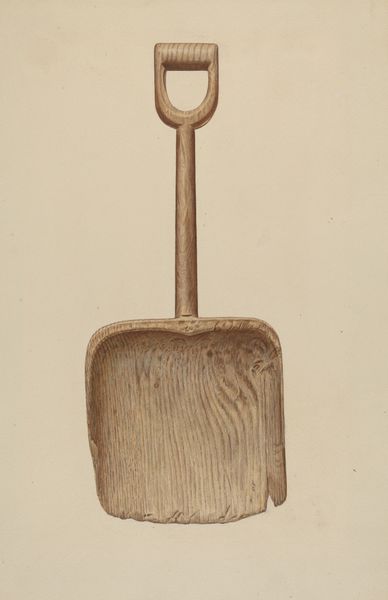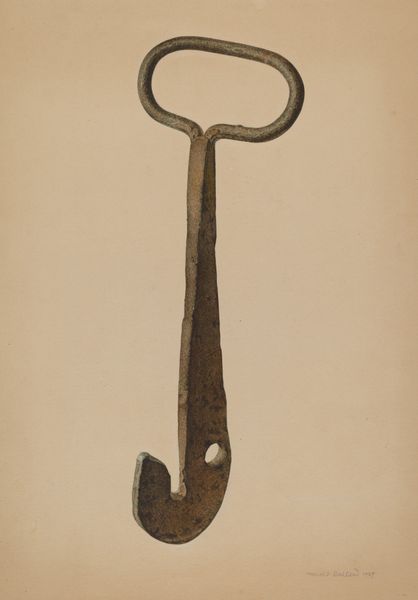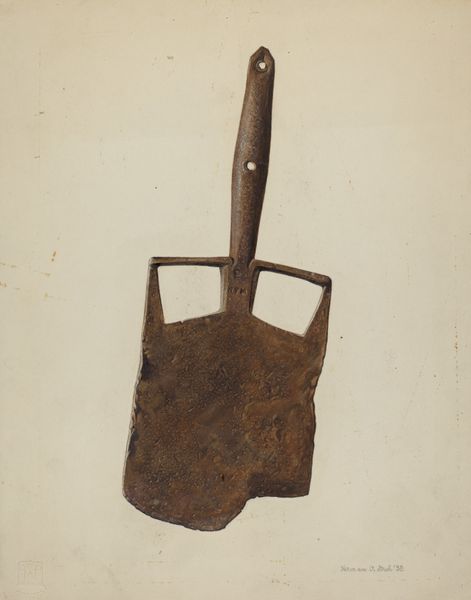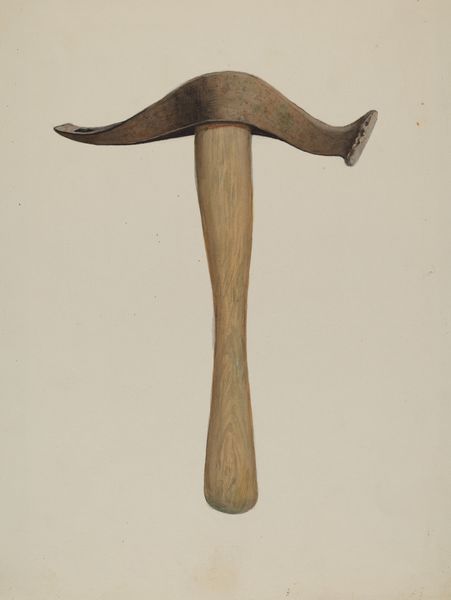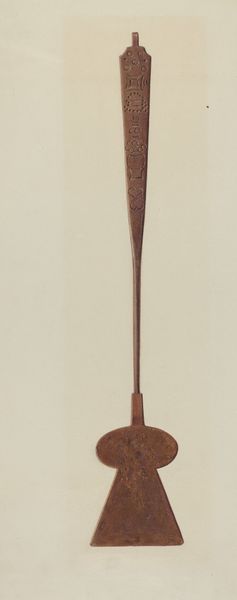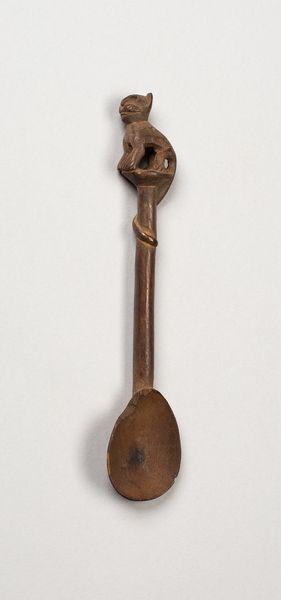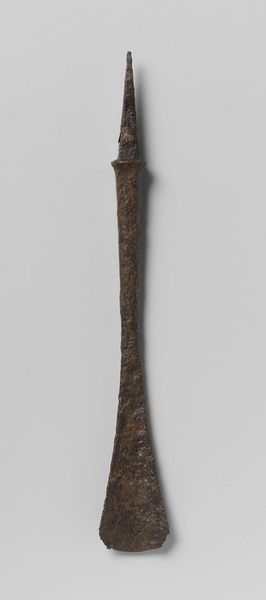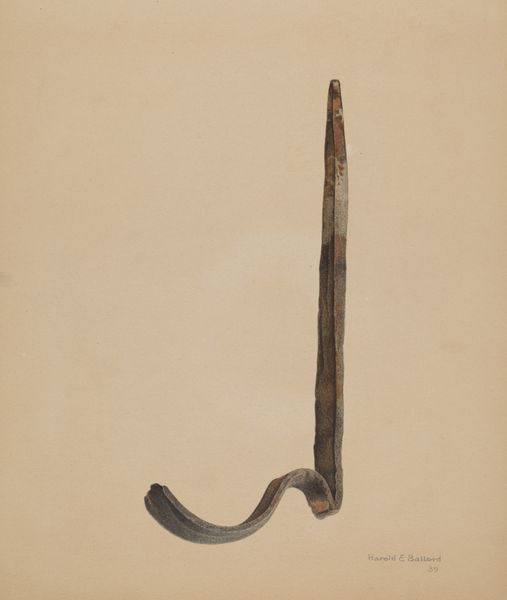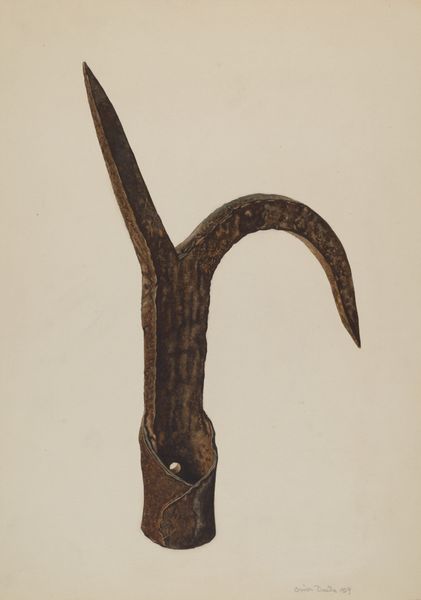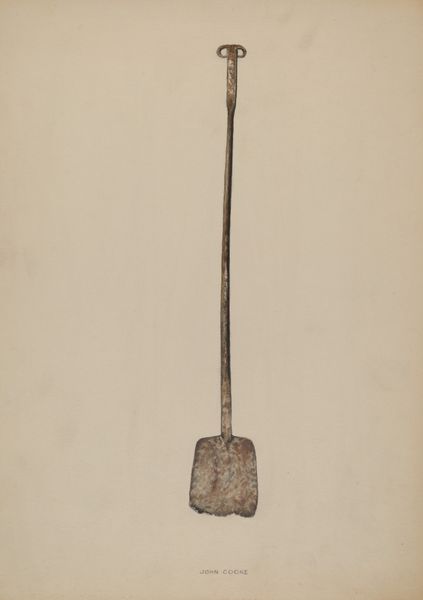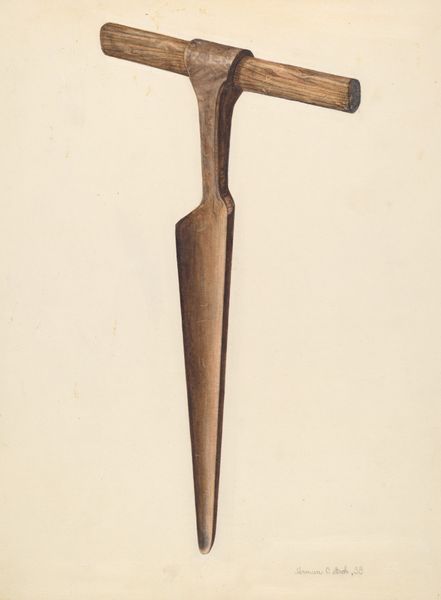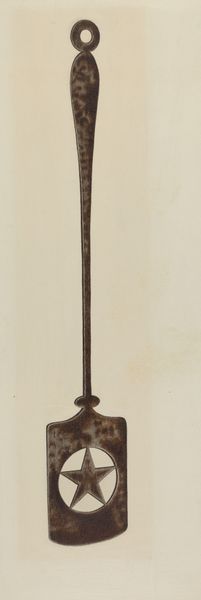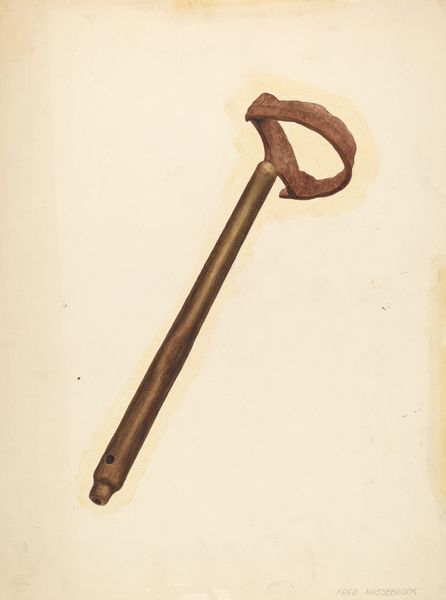
drawing, watercolor
#
drawing
#
charcoal drawing
#
watercolor
#
watercolour illustration
#
realism
Dimensions: overall: 35.2 x 24.6 cm (13 7/8 x 9 11/16 in.) Original IAD Object: 11 1/4" long; 2 1/2" wide
Copyright: National Gallery of Art: CC0 1.0
Editor: This is "Toy Shovel," a watercolor and charcoal drawing by Eugene Bartz, created around 1937. It’s deceptively simple; a single object rendered with a lot of careful detail. How do you interpret this work, focusing on the object itself and its execution? Curator: It's primarily a study of form and texture. Bartz has focused on the object's verticality and the contrast between the smooth, elongated handle and the rough, planar surface of the shovel's blade. The modulation of light and shadow across the wood's grain invites a haptic, almost tactile, reading. The choice of watercolor and charcoal allows for both precise linework and subtle tonal variations, which enhance the sense of depth. What effect does the background of negative space have? Editor: It emphasizes the shovel, right? With the monochromatic color, it feels like Bartz really wanted you to look only at the tool and nothing else. Is the isolation significant? Curator: Precisely. The isolation directs our attention to the object's inherent qualities. Bartz compels us to engage with its geometry, its material presence. Notice, the work is not overburdened with historical meaning. We appreciate its structural simplicity and materiality, almost as if he is asking us to assess what constitutes “shovel-ness.” Editor: So, instead of what the shovel represents, it is all about what it *is*. I’m seeing how formalist criticism really makes you slow down and consider the art piece itself. Curator: Exactly! Through acute observation and skillful rendering, Bartz elevates a commonplace object to an object worthy of contemplation, revealing inherent beauty in its lines, tones and textural contrasts. Editor: This focus on the shovel’s form is an interesting take, I wouldn't have focused on that originally. Curator: Indeed, by attending to its materiality, its lines and contrasts, the meaning of a seemingly insignificant object reveals itself to us.
Comments
No comments
Be the first to comment and join the conversation on the ultimate creative platform.
